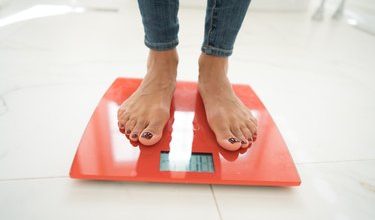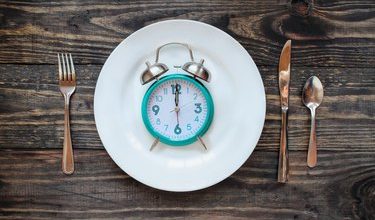4 Editors Put Beyond Yoga’s Popular Activewear to the Test

Between trying out the trendiest workout studios and putting all kinds of fitness gear to the test, we editors are quite knowledgeable when it comes to the best activewear on the market. From butt-sculpting leggings and posture-correcting sports bras to bodysuits and onesies, we’ve tried dozens of options from activewear brands across all price points.
Beyond Yoga in particular is known for its “beyond soft,” non-restrictive workout tops and bottoms; you’ve likely seen the brand’s popular matching sets — in its original Spacedeye performance fabric — in action at your favorite Pilates class. One PS editor previously said the cropped top and legging combo was “one of the most comfortable things [she’s] put on.” The recognizable heather material also comes in a wide array of colors.
But the brand offers many more options. We tried some of the lesser-known items you might not be as familiar with, like tanks from its new Powerbeyond collection designed for extra support, and molding and sculpting; exercise dresses; and tennis skirts. Four PS editors put Beyond Yoga’s workout clothes to the test, both on the go running errands and for activities like playing pickleball and training at the gym. Keep reading for our review of Beyond Yoga’s bestselling activewear.
Beyond Yoga Spacedye Court Appeal Mini Dress in Periwinkle Cloud Heather ($118)
“I’m a longtime fan of Beyond Yoga’s Spacedeye sets — I know just how comfortable and buttery this fabric feels since I have the matching Slim Racerback Cropped Tank and Midi High Waisted Legging in several colors. So I was especially excited to try this workout dress in a fun, summer colorway.
It’s just as comfortable as expected, and unlike most exercise dresses I’ve tried, it didn’t feel restrictive. Built-in shorts are also a must for workout dresses, and this one goes the extra mile with a hidden pocket and adorable side slit. I do prefer my dresses to be a little shorter, but it’s worth noting I’m 5’2″.” — Yerin Kim, features editor
Rating: ★★★★★
Beyond Yoga Powerbeyond Strive Cropped Tank in Retro Red ($78) and Beyond Yoga If You Pleats Mini Skirt in True White ($86)
“The Strive Cropped Tank comes in Beyond Yoga’s new Powerbeyond sport fabric, which reminded me of the brand’s ultra-soft Spacedye fabric, but more compressive. I immediately fell in love with this poppy red hue and the cute racerback design. The top’s shelf-bra component offered medium support, which was enough for my 34C bust, but it doesn’t have any padding if that’s something you look for in a sports bras. Overall, the tank was really comfy and something I can see myself wearing on repeat this summer — especially since I’m in my pickleball era.
As someone who has fallen victim to the tenniscore aesthetic taking over their FYP (thank you, ‘Challengers’ and Morgan Riddle), I’ve been on the hunt for a classic pleated tennis skirt I can wear on and off the court. I have a short torso, so it can be tricky to find one that’s flattering and not too high-waisted, but this Beyond Yoga miniskirt was perfect for me. The only thing I’d note is that the bike shorts underneath did roll up a bit on me, but otherwise I’m absolutely obsessed.” — Alida Araica, newsletter manager
Rating: ★★★★☆
Beyond Yoga Spacedye Court Appeal Mini Dress in Darkest Night ($118)
“I’ve always been intrigued by workout dresses, but this is the first one I’ve ever tried. I’ve been a fan of Beyond Yoga’s incredibly soft Spacedye fabric, so I was thrilled to discover this dress was just as comfortable and stretchy as my favorite pair of Beyond Yoga bike shorts. The heathered black color also camouflaged any sweat nicely.
I also loved how easy it was to pull on this dress: It hugged my curves, but wasn’t overly compressive, making it equally appropriate for running errands or playing pickleball. The built-in bike shorts also give you plenty of coverage, but the one downside is that you have to pull the whole dress down to use the restroom. Overall, I still loved this active dress, and will definitely be wearing it weekly throughout the late summer and early fall.” — Annalise Mantz, associate editor, branded content
Rating: ★★★★★
Beyond Yoga Powerbeyond Strive Cropped Tank in Black ($78) and Beyond Yoga If You Pleats Mini Skirt in True Black ($86)
“I’m pleased to report that this set can survive both pickleball and padel sessions, while also being versatile enough to both participate in and spectate at sporting events. I’m usually found wearing leggings or joggers, and some of the tennis skirts I’ve tried have missed the mark — some have entirely too many pleats or use heavier fabrics that feel a bit too weighted. Enter this Beyond Yoga pick: it’s lightweight, breezy, and fun. The material is soft and airy, and the pleats are lightweight but still durable enough to keep the accordion-shape design. All in all, it’s super cute, with tons of flowy movement.
The tank is practically perfect, but could be even better with optional removable bra cup pads. (I used my own here.) But if that’s no big deal for you, enjoy. The tank worked well for a variety of different workouts, including resistance training and yoga. The material is buttery soft, doesn’t dig into your skin, and won’t leave painful imprints post-workout, making it perfect for dance, post-class stretching, or, best of all — corpse pose.” — Jade Esmeralda, staff writer, health and fitness
Rating: ★★★★☆
Yerin Kim is the features editor at POPSUGAR, where she helps shape the vision for special features and packages across the network. A graduate of Syracuse University’s Newhouse School, she has over five years of experience in the pop culture and women’s lifestyle spaces. She’s passionate about spreading cultural sensitivity through the lenses of lifestyle, entertainment, and style.




